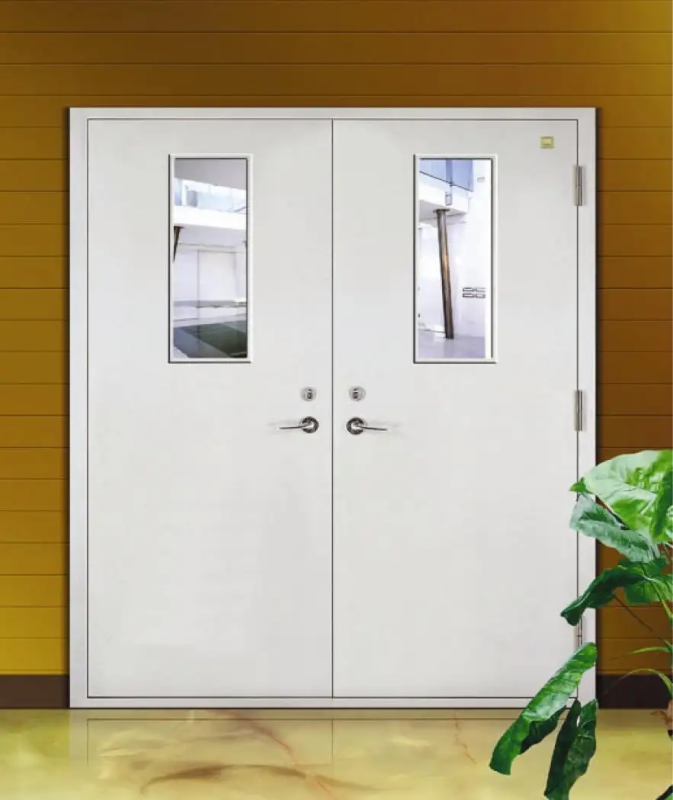A Comprehensive Comparison: Solid Wood Doors, Solid Wood Composite Doors, and Steel-Wood Composite Doors

When choosing the right door for your home or building, understanding the differences between solid wood doors, solid wooden composite doors, and steel-wood composite doors is essential. Each type offers distinct advantages, depending on factors such as durability, aesthetics, and cost. Let’s explore the key differences and benefits of each type.
1. Solid Wood Doors
Solid wood doors are typically considered a premium option because they are made entirely from natural wood. In a broad sense, even solid wooden composite doors can be classified under this category, as long as they do not use chipboard as the core material. In most cases, solid wood doors in China are made using high-quality lumber or engineered wood, with plywood used to seal both sides.
The surface of a solid wood door is often finished with clear lacquer and a layer of veneer, giving it the natural beauty and elegance of authentic wood grain. This contributes to the luxurious appearance and heavy-duty feel of solid wooden doors. Additionally, these doors are highly resistant to warping and cracking, while maintaining good insulation and soundproofing properties. However, solid wooden doors tend to be more expensive due to the higher material costs and labor involved. They are also more prone to moisture-related damage and deformation, making them less ideal for regions with high humidity, especially in northern climates where they may warp over time.
2. Solid Wood Composite Doors
Solid wood composite doors are crafted from a combination of wood materials, with the door frame typically made from pine or fir wood and the core filled with a wood honeycomb structure. The surface is often finished with high-density fiberboard (MDF) or perforated chipboard and veneered with high-quality wood skins. These doors are created using advanced hot-pressing technology, making them resistant to deformation and cracking.
Compared to solid wood doors, solid wooden composite doors are less affected by seasonal changes, offering excellent stability. They retain many of the benefits of solid wood doors, such as natural beauty, good insulation, and impact resistance, but at a more affordable price. The wide variety of styles—from European carvings to modern minimalist designs—provides consumers with more options for different interior design preferences.
However, one downside is that solid wooden composite doors are less moisture-resistant and fireproof compared to steel-wood composite doors. They are also not as environmentally friendly, as the manufacturing process involves more adhesives and engineered materials.
3. Steel-Wood Composite Doors
Steel-wood composite doors, often referred to as armored doors, represent a newer type of door technology. These doors combine a steel structure with a wood veneer, offering the best of both worlds: the strength of steel and the beauty of wood. The inner structure is reinforced with steel strips, while the outer layer is covered with MDF or wood panels. One of the greatest advantages of steel-wood composite doors is their environmental friendliness. Since most of these doors are manufactured without paint or harmful chemicals, they contribute to a healthier living environment.
Steel-wood composite doors are incredibly durable, resistant to deformation, and virtually impervious to cracking. They are also highly secure and fire-resistant, making them a top choice for consumers looking for a door that combines security with aesthetics. Furthermore, they tend to be more affordable than solid wooden doors while offering better resistance to the elements.
However, while steel-wooden composite doors excel in functionality, they may not offer the same natural warmth and elegance as solid wooden or solid wooden composite doors. Despite their wooden surface, the underlying steel construction can sometimes create a more industrial feel.
Conclusion
Each type of door—solid wood, solid wood composite, and steel-wood composite—comes with its unique strengths and weaknesses. For those prioritizing luxury and aesthetics, solid wooden doors offer unmatched quality and richness. If you’re looking for a more cost-effective option that still maintains many of the benefits of solid wood, solid wooden composite doors are an excellent choice. Meanwhile, for homeowners or businesses seeking durability, security, and environmental friendliness, steel-wood composite doors are the clear winner.
Before making a decision, it’s crucial to weigh your priorities in terms of cost, durability, and aesthetic preferences. Choose the right door that not only enhances your space but also meets your functional needs.
For more information on the best door manufacturers and how to choose the right door, explore our other expert articles.
